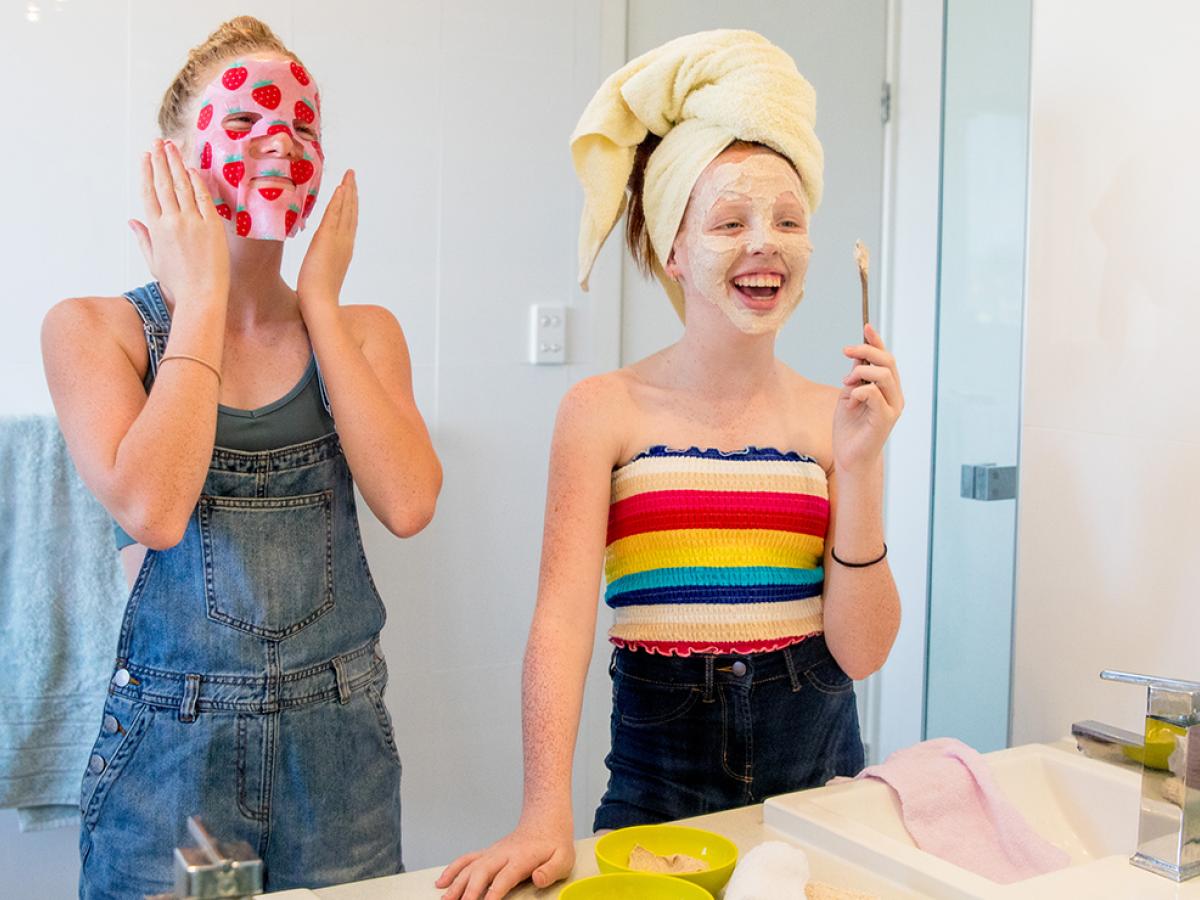September 24, 2025

TikTok and other social media channels provide a wealth of information on every topic imaginable. Want to know how to French braid hair? No problem. Looking for breakfast ideas high in fiber and protein? You got it.
Getting advice from social media can be harmless for adults who know influencers should never take the place of medical professionals. But for teens and young girls, the impact of those videos can be powerful — especially when they involve beauty and skin care.
Researchers at the American Academy of Pediatrics analyzed trending skin care videos — averaging over one million views each — being posted by and for children ages 7 to 18.
Here’s what they found:
- The videos suggested skin care regimens with an average of six products.
- The most-viewed regimens contained an average of 11 irritating active ingredients.
- Sunscreen was only mentioned in 25% of the reels.
- The average cost of each skin care routine was $168.
To see how social media recommendations compare to medical recommendations, we spoke with Kimberly Eisenstein, MD, a pediatric dermatologist at MU Health Care. Turns out, those TikTok videos left out a lot of information about what your child’s skin really needs.
“It’s a safe assumption that most of the products being mentioned in these videos have not been studied in children,” Dr. Eisenstein says. “These skin care regimens not only have a big price tag, but there are a lot of unknown safety questions.”
Dr. Eisenstein shares the facts about skin care for preteens and teens — much of which they are likely not learning on social media.
Less Is More With Skin Care Routines
It’s a good idea for kids to establish a skin care routine and develop the habit of taking care of their skin around age 10. Start earlier if puberty begins before then.

The goal is to keep it simple, says Dr. Eisenstein. Skin care regimens for most kids and teens should be just two or three steps:
- Wash your face twice daily using a gentle, fragrance-free cleanser.
- Follow it with a moisturizer containing barrier lipids, such as ceramides, to help maintain and develop the skin barrier.
- Apply sunscreen over the moisturizer each morning — or use a moisturizer that contains sunscreen.
“The more products you layer on without really knowing what you are putting on your skin, the more likely you are to have a reaction of some kind,” Dr. Eisenstein says. “Some of these products may also react with each other.” She adds that teens should also avoid using gizmos and gadgets — such as mechanical exfoliators — on their skin.
If your child has a specific skin issue or develops chronic acne, your doctor may recommend a skin care routine that is a little more complex. If your teen’s acne is mild, the best treatment is to leave pimples alone.
Certain Ingredients in Skin Care Products Are Known Irritants
Skin care products often contain chemicals and ingredients to make them smell good, look good and last longer. But those ingredients may increase your risk of irritation and allergic contact dermatitis.
“Whenever possible, avoid products with added fragrances, dyes or essential oils,” Dr. Eisenstein says. “Even if the product is ‘hypoallergenic,’ it may contain fragrance. If you open the bottle and smell a natural scent like lavender, it means there is fragrance in there.”
Some chemicals found in skin care products may be harmful beyond your outer layer if they disrupt normal hormonal function. Some research using mouse models suggests using skin care with chemicals at a young age may prematurely activate puberty — though more data for humans is needed.
To be safe, Dr. Eisenstein recommends children under the age of 12 avoid certain chemicals and common irritants, including:
- Fragrances
- Formaldehyde
- Lanolin
- Parabens
Product Labels Can Be Misleading
There’s a difference between a product’s label — the front of the package that draws your attention — and the ingredients list. Only reading the front label can be misleading.
“It’s really tricky because these products are unregulated and companies can label them any way they like,” Dr. Eisenstein says. “One study found that some products labeled as ‘organic,’ ‘fragrance-free,’ ‘clean’ or ‘hypoallergenic’ were more likely to have additives and other irritants.”
Remember the packaging is about marketing. It’s important to read the ingredients list and rely less on the attention-grabbing text on the front of the container.
Sun Protection Is Critical
Early sunscreen intervention can help protect skin from developing disease and signs of aging later in life, says Dr. Eisenstein. She recommends a minimum SPF of 30.
For preteens, look for sunscreens labeled as pediatric and tested on kids for safety. Teenagers may want to consider products that do double duty, such as two-in-one moisturizers with SPF or tinted sunscreen. Don’t count on the SPF in makeup to get the job done — makeup products don’t absorb the same way as creams and may wear off more quickly.
“The best sunscreen is the one your teen will use,” Dr. Eisenstein says. “If it smells funny or is too pasty, they won’t put it on. You may need to experiment to find the right fit.”
If your child complains that using sunscreen will keep them from getting tan, Dr. Eisenstein recommends drilling one critical message into your teen: avoid tanning beds. Spray tans and self-tanning creams are a much better alternative.
“A tanning bed is a class-one carcinogen,” she says. “It’s like allowing your kids to smoke cigarettes.”
Dermatologists and Pediatricians Are the Best Source of Skin Care Guidance for Teens
Your child doesn’t need to see a dermatologist to begin a skin care routine. If you have simple skin care questions — and little to no medical issues — your pediatrician is a great resource. They have good knowledge about skin care and can refer to a dermatologist if needed.
However, if your child isn’t tolerating over-the-counter skin care products — if the skin on their face turns red or develops a streaky, itchy or patchy rash — a dermatologist can help. They can look at the products being used, pinpoint the problem and provide alternatives. They can also test for allergens.
“The bottom line when it comes to taking skin care advice from social media is that if something seems too good to be true, it probably is,” Dr. Eisenstein says. “There are no quick fixes or magic products. Just keep it simple and know that you have medical professionals here to help when you need it.”
Next Steps and Useful Resources
- Want to discuss skin care options for your teen or tween? Speak with a dermatologist or pediatrician.

